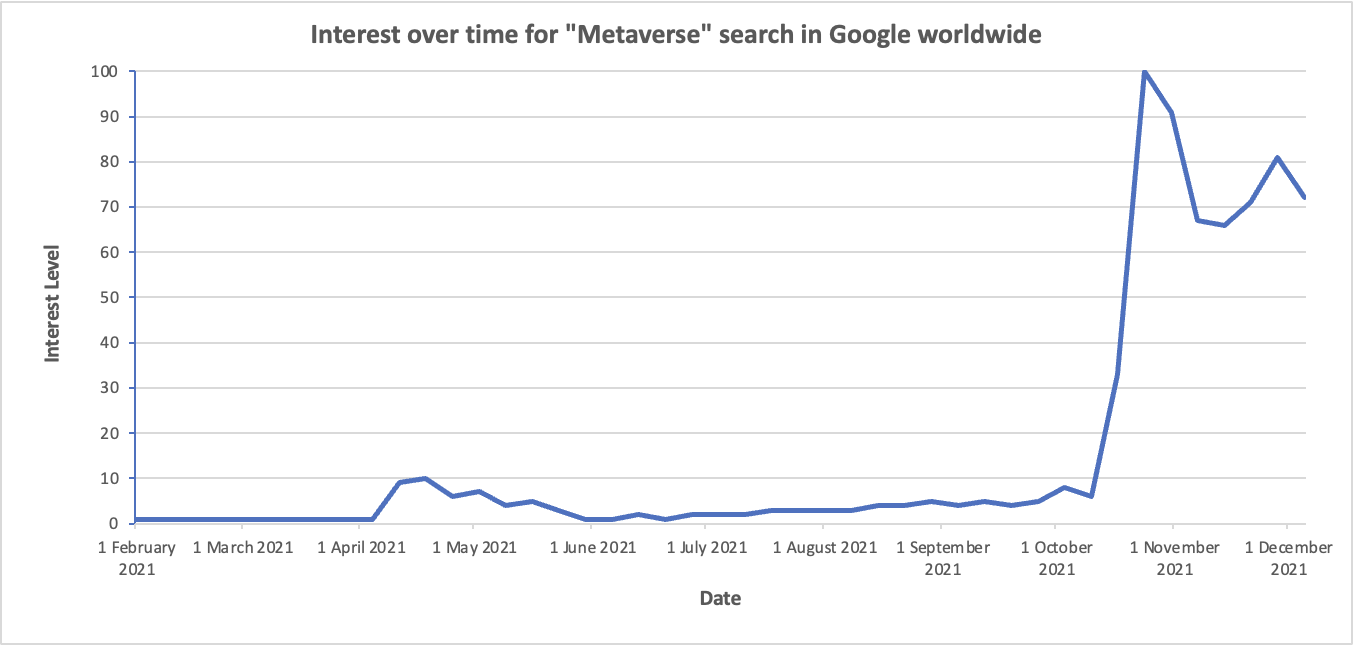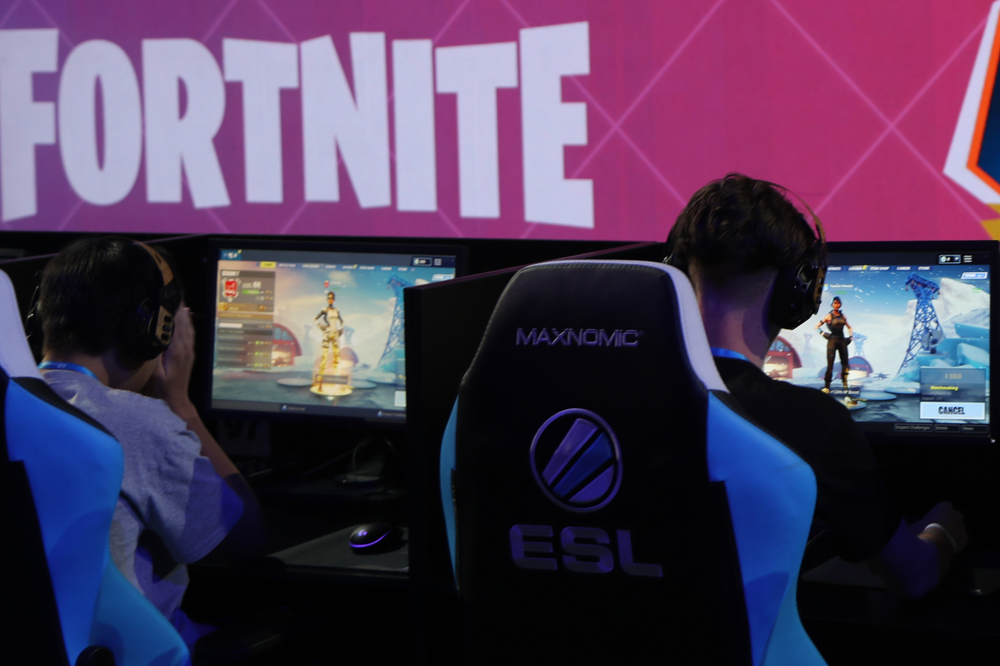Centralised Metaverse
2020 and 2021 opened a new age in human interaction with regard to how we chose to connect ourselves through digital (metaverse-type) experiences hosted on centralised and decentralised systems. Lockdowns and work-from-home mandates saw digitised interactions take on an outsized role as applications and systems including Zoom and Microsoft Teams became integral to work and social lives. Naturally, the gaming industry also enjoyed a boom in this digital transition and spurred on gaming studios to explore new avenues to increase immersion in gaming environments and metaverses.
As the systems of video conferencing, gaming, social media and beyond continue to play an evermore important role in society, we are approaching an interesting moment of choice for users. They can choose to engage 'Centralised' or 'Decentralised' solutions and systems. Both provide strengths and weaknesses with their approaches to creating these digital worlds and platforms that will form the basis of much human interaction going forward.
New to the metaverse? Catch up on part 1 of our metaverse deep dive here: What is the Metaverse?
The very nature of centralised systems, from big tech to the central banking system and even as far as the state itself, has come under increasing scrutiny for its encroachment on privacy . Analysis of these systems highlights a recurring theme – the concentration of power in the hands of a very few. This prompts the question of how comfortable individuals are entrusting their data, financial wealth and personal liberties with centralised institutions, often run by a small band of unelected individuals. Is it possible that the level of exposure to and reliance upon such systems is too great and a net-negative for society?
A notable example of a centralised system is Mark Zuckerberg's Facebook, which rebranded as Meta in sign of intent to focus resource and effort on developing virtual environments. The shake-up in the company’s strategy provoked plenty of commentary and discussion on what shape virtual worlds might take and, crucially, the broader implications they will have for both the firms behind them and the consumers engaging them. As cryptocurrencies continue to be recognised as a legitimate asset class increasingly in the established financial world, the expansion into virtual economies is opening up new possibilities. According to the graph below from Google Trends, interest in Zuckerberg’s idea skyrocketed in 2021 once he introduced it to the world.

Centralised services have certain advantages over some decentralised solutions due to operating with established user bases and offering interoperability between applications within this centralised framework.

For example, with Facebook having approximately 2.96 billion active users, Meta already has a substantial existing base of users which can seamlessly move between and interact with the umbrella company’s suite of closely connected products – Facebook, Instagram, WhatsApp and metaverse, Horizon World. Furthermore, centralised gaming platforms are well positioned to dominate the metaverse with large player bases that are already accustomed to the concept of digital worlds. Plus, the gaming space has experience integrating features and events of the real world as seen in Fortnite The open world game hosted concerts within its digital world starring well-known artists including Travis Scott and Ariana Grande in 2020. The live Travis Scott concert was virtually attended by 12.3 million players, demonstrating just how well these centralised gaming platforms can already scale and accommodate users in a metaverse environment.
It’s clear to see the competitive advantages centralised systems carry over decentralised rivals in the metaverse space. Centralised providers boast plenty of users, who are familiar with their existing products and services, which can feed into and enhance any metaverse platforms they launch or expand on.
Centralised systems have been created in cyberspaces for decades – particularly in gaming, think Rockstar Games’, Grand Theft Auto – with serious investment bringing polished products. The foundations of these tried and tested centralised systems, and their infrastructure, enable the likes of big tech to aggressively pursue development in the materverse sector with more advanced and unchecked strategies. In contrast, decentralised equivalents are trying to get up to speed with a less sophisticated, trial and error approach.
Looking again at gaming again, this difference in development resources is stark. Compare Axie Infinity to Call of Duty – the former is a novel blockchain-based video game that’s rough around the edges, whereas the latter is a blockbuster franchise and the final word in high-quality gaming productions. It comes as no surprise then that Activision, the company behind Call of Duty, boasts a market cap sixty times the size of Axie Infinity's at the time of writing.
A major drawback of these centralised systems, however, is the lacklustre security of individuals’ privacy due to a concentration of power and control. Take Facebook’s data mismanagement accusations, most notably the legal case concerning Cambridge Analytica. The consulting firm was given access to Facebook users’ data to sway political discourse.
Facebook gathers huge amounts of data on their users, gaining insight into phone contacts and other intimate forms of data; synthesised this translates into highly-detailed user profiles.With the above in mind, concerns over trusting a company (with chequered practices) is then perfectly justified with respect to users’ data. As a result, there is a compelling case for decentralised alternatives, which would manage data in fairer and transparent fashion regarding privacy, free of a central party that may be incentivised to act against the interest of its users for gain, as Facebook arguably did.
A positive step we’re seeing is the bridging of services between these centralised and decentralised platforms. In practice, we are seeing users gain exposure to decentralised currencies through centralised services. Twitter now allows users to ‘tip’ one another with Bitcoin and Ethereum, facilitating the adoption of decentralised solutions and networks.
Further down the line, this could lead to these decentralised currencies being used within these centralised metaverses, helping users to maintain a degree of sovereignty when using these services.
Decentralised Metaverse
Spearheading the metaverse movement at the moment is gaming – where people around the world have formed bonds and social connections via digital means. However, the metaverse has great potential beyond this corner of the entertainment sector. It can in fact offer utility in sectors such as online shopping, workplace and investment tools, social media and even festivals, not to mention use cases not yet conceived Given its potential breadth and societal impact, many people question whether or not the metaverse should be centralised or decentralised.
In this following section of the article, we will be looking into the latter, considering its advantages and disadvantages and how these may differ under certain circumstances.
Catch up on part 2 of our metaverse deep dive here: The Major Players of the Metaverse
A major advantage of a decentralised metaverse over a centralised one is that decentralisation allows for participation without permission – all you need is access to the internet. A great example of this is the metaverse-cum-game, is play-to-earn cryptocurrency projectAxie Infinity (AXS): a virtual world filled with fictional creatures that players use to earn NFTs or crypto, which can be traded (into cash), all courtesy of blockchain technology. Demonstrating democratic principles, no one is excluded from the game and better still, it’s the players that dictate the trajectory of the project and its evolution being partial owners and operators of the system.
Catch up on parts 1 and 2 of our metaverse deep dives here:
Disclaimer: This assessment does not consider your personal circumstances, and should not be construed as financial, legal or investment advice. These thoughts are ours only and should only be taken as educational by the reader. Under no circumstances do we make recommendation or assurance towards the views expressed in the blog-post. The Company disclaims all duties and liabilities, including liability for negligence, for any loss or damage which is suffered or incurred by any person acting on any information provided.
.png?u=https%3A%2F%2Fimages.ctfassets.net%2F4ua9vnmkuhzj%2F2cOywdhYZ4EhUXb2JdAbru%2Fd144a2c5f45d3b90fa237d1698899a5c%2FUntitled_design__15_.png&a=w%3D439%26h%3D250%26fm%3Dpng%26q%3D80&cd=2023-05-09T05%3A29%3A07.895Z)
.png?u=https%3A%2F%2Fimages.ctfassets.net%2F4ua9vnmkuhzj%2F3spEQl01aQfHVCQ7XGfue1%2F0872b77f75dde50c04bc1203ac893485%2FUntitled_design__13_.png&a=w%3D439%26h%3D250%26fm%3Dpng%26q%3D80&cd=2023-05-08T07%3A27%3A00.249Z)
.png?u=https%3A%2F%2Fimages.ctfassets.net%2F4ua9vnmkuhzj%2F1zNRsIeweJesyMCND3fJkK%2F6b37dbce46e92fc1c51ce41fcebc6117%2FUntitled_design__12_.png&a=w%3D439%26h%3D250%26fm%3Dpng%26q%3D80&cd=2023-05-08T07%3A06%3A45.484Z)
